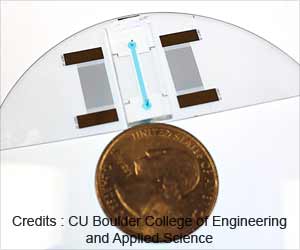Rapid heart rate is a familiar condition among elderly people, and expresses a potential goldmine for pharmaceutical companies who can enhance the present treatment offerings, states a new report.

Tachycardia is defined as a condition of rapid heart rate, which affects the ability of the heart to pump blood efficiently. The key driver responsible for the growth of the market was an increase in the prevalence of Atrial Fibrillation (AF) and Atrial Flutter (AFL), which represent forms of SVT.
According to the National Health Service (NHS), the prevalence of AF in the UK was estimated to be 1.4% in 2011, and the Centers for Disease Control and Prevention (CDC) predicts that in 2050, 12 million people will be affected with AF. The incidence of atrial fibrillation increases with age, and therefore the increase in SVT can be linked to the increase in the aging population, as well as the rising prevalence of associated risk factors such as hypertension, diabetes, mental stress, and lung diseases.
Currently, the SVT therapeutics market has several approved branded drugs, including Multaq (dronedarone), Pradaxa (dabigatran etexilate mesylate), Brinavess (vernakalant) (approved in Europe), and Xarelto (rivaroxaban). Many antiarrhythmic drugs, calcium channel blockers, beta blockers, and anticoagulants are also used to treat SVT. Patients currently benefit from good efficacy, dosage regimens and therapy durations, suggesting that current competition in the market is strong. However, GlobalData believes that the SVT therapeutics market still has significant unmet need, attributed to safety and tolerability profiles.
Research into new drug treatments is strong, with the SVT therapeutics pipeline containing 24 molecules in various phases of development. Out of these 24 molecules, six are in Phase III and filing stages, promising launches in the next few years, and 13 First-In-Class FIC molecules accounting for 54% of the total pipeline prove that breakthroughs are being made in the industry for the treatments of this condition. The late stage of development (Phase III, filing stage) contains Me-too molecules such as Eliquis, Brinavess, Lixiana, and Gencaro. Eliquis and Lixiana are the most promising. Both these molecules are oral anticoagulants and have shown superior results over warfarin, along with an improved safety profile.
Growth is also expected in the SVT therapeutics market, as April 2012 saw Boehringer Ingelheim cut the price of Pradaxa by 13%, making the drug affordable enough to be recommended by the National Institute for Health and Clinical Excellence (NICE) as a cost-effective drug, ensuring the use of Pradax within the NHS.
Advertisement
GlobalData











